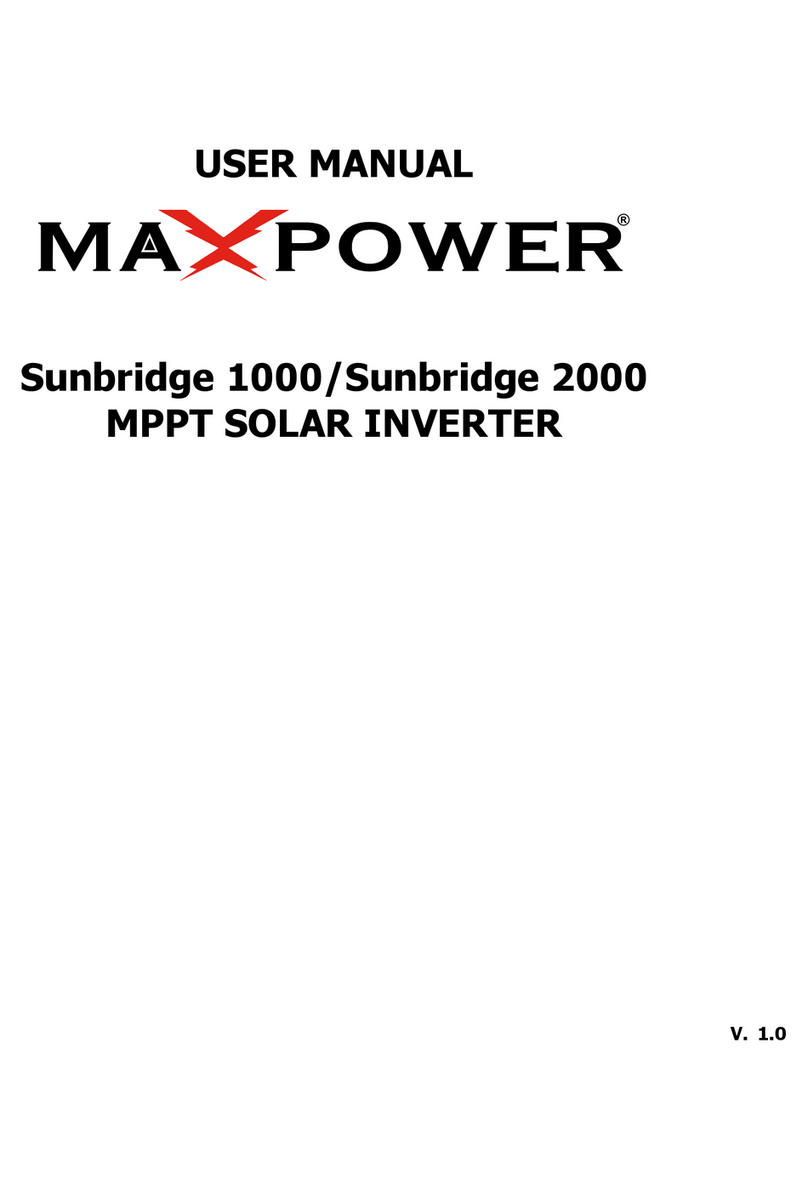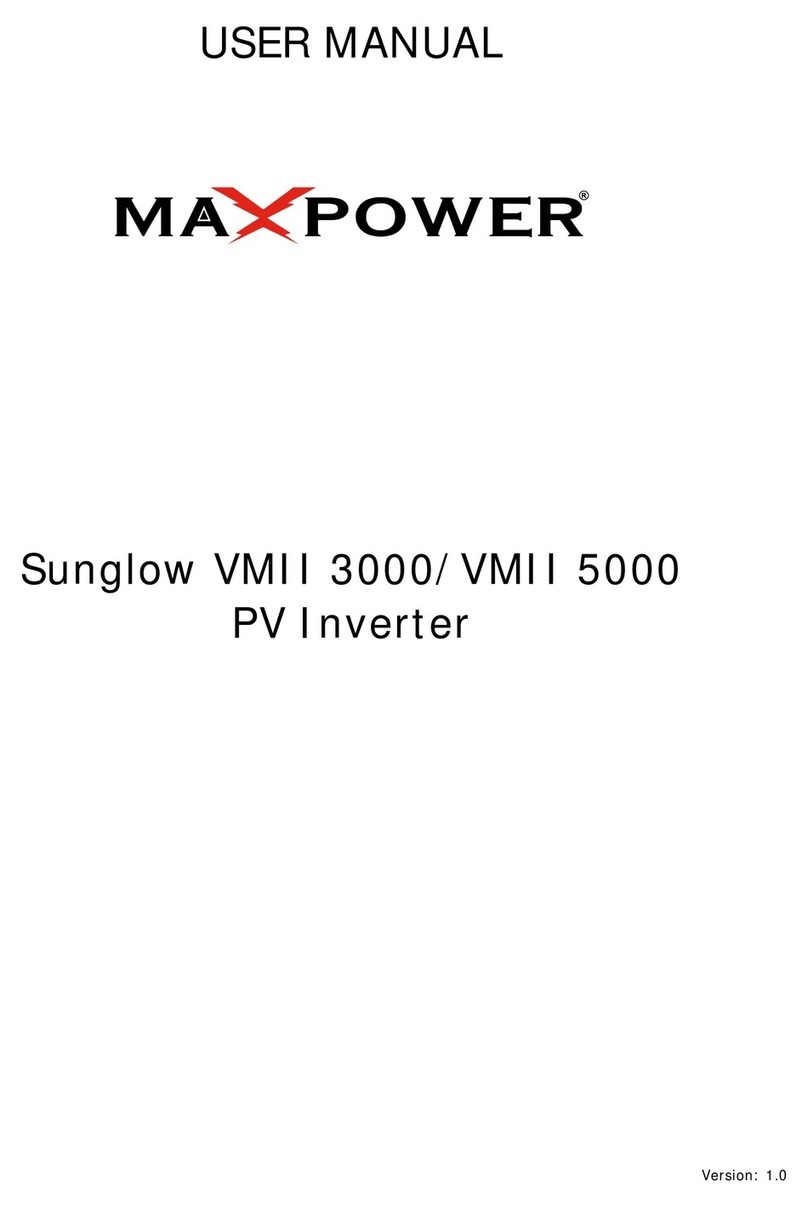Installation Manual for PV Modules MPS---N-R
V1Mar 2023 www.maxpowersolar.com.au
3
individual gaskets of the joint and that any gaps between the gaskets may cause fire and / or
electric shock risk.
According to the National Electrical Code, the maximum system voltage shall not exceed
1500V. Do not install or operate modules during wet or windy weather.
MAXPOWER SOLAR module electric shock protection Class II.
The installation elevation of XXX module assembly shall not be higher than 2000m.
2.3 Operational safety
To avoid damage to modules, please do not scratch and impact modules, please do not
use paint or adhesives on the front and back of the glass modules. Avoid scratching, cutting
cables and connectors, or exposing them to long-term sunlight, to prevent reduced insulation.
Do not drop modules or cause objects to fall on modules. Do not place any heavy or sharp
objects on the module.
Please do not use water to extinguish the fire while the power is still on. Only work in dry
environment, and only use dry tools. Do not work in a humid environment without wearing
any protective measures. In the sun, regardless of whether the PV module is connected to
the system, please do not touch the module's junction box, connectors, cables and other live
parts without any protection.
Do not climb, step, stand, walk or jump directly on the package or modules.
2.4 Fire safety
Please consult local laws and regulations before installing modules, which should comply
with the building fire protection requirements.
PV module has a fire rating of Class C.
When the modules are installed on the roof, the roof must be covered with a layer of fire-
proof material suitable for the corresponding fire rating. Adequate ventilation shall be ensured
between the module and the mounting surface.
Different roof structure and installation will affect the fire safety of the building. There
may be a fire if the module is not installed properly.
To ensure the fire rating of the module on the roof, the minimum distance between the
module and the roof surface is 10 cm.
Please use appropriate module parts such as fuse, circuit breaker, earth connector
according to local regulations.
Do not use modules if exposed flammable gas is present nearby.





























